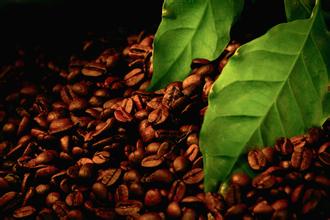Latin American coffee beans specialty coffee origin
The highlands of Ethiopia are the birthplace of coffee. The traditional drying method is still used to produce mocha-Hara beans (Harrar,Harari,Harer or Harar) at an altitude of about 2,000 meters near Harrar in the east. Hara has a medium texture with a fruit wine-like flavor, and a good Hara is as wild as the best Yemenmoka. Dried beans from other regions, such as Gimbi or Ghimbi, Jima,Jimma or Djimah and Sidamo, are equally wild and wine-like, but not so rich and a little rough. The water-washed mocha from Jinbi in the west has the same sour wine as Hara, but it is packaged with a richer and balanced feel and a thicker texture. As for water-washed beans from the south, such as Sidamo and Gemma, they keep less sour wine and replace them with more gentle and delicate flavours of lemon and flowers. The best is produced in a high, narrow area of Sidamone, called Yirgacheffe, whose rich taste brushes the taste buds and leaves an endless aftertaste, while the slightly sour taste is similar to Sumatra, swimming in a rich texture; in addition, it adds a unique soft floral fragrance, which is really the only coffee in the world.
[Kenya (Kenya)]
Kenyan coffee is produced near the Kenyan Mountains in the central part of the country and is sometimes guaranteed in the name of the capital, Nairobi. Here beans are graded by size, the largest is AA, followed by An and B, and so on, which has nothing to do with the origin, so the quality and characteristics of the same AA beans may be quite different. With the exception of dry mochas in Yemen and Ethiopia, most coffee on the African continent is washed. Due to the support of the state, Kenya's average standard of washed Arabica beans is very high and is handled very carefully. Good Kenya beans not only have the same strong sour wine as mocha, irritating both sides of the tongue, it even has the rich texture that mocha lacks, and it can best brew a balanced drink in African coffee.
[Tanzania (Tanzania)]
Most of the Tanzanian beans are grown in Mr. Kilimanjaro and Mt, near the northern Kenyan border. The Meru area, often called "Clemangaro", is occasionally named after the distribution center Moshi or Arusha. In addition, on the southern side of the border, a little washed Arabica beans are produced, named after the nearby big city Mbeya or the distribution center Pare. The way of grading is similar to that of Kenya, distinguishing sizes by the English alphabet. Most Tanzanian beans have typical African bean characteristics. The better Clemencaro, similar to ordinary Kenya, has a strong texture, is usually milder acidic than Kenya, and evenly stimulates the taste buds in the middle and sides of the back of the tongue. It tastes a bit like tomato or soda. As for southern beans, they are similar to secondary water-washed mochas, with soft and ingratiating weak acidity, round taste, and medium texture. Beans from neighboring Malawi (Malawi) also have the same quality as Tanzania beans.

Important Notice :
前街咖啡 FrontStreet Coffee has moved to new addredd:
FrontStreet Coffee Address: 315,Donghua East Road,GuangZhou
Tel:020 38364473
- Prev

How to milk foam in the process of milking?
The lower the starting temperature of the foam, the longer it can be operated, and of course, the more delicate it can be, which is one of the reasons why milk needs to be refrigerated. Milk foam is usually the best to do flower drawing when heated to more than 60 degrees. But we use a manual milking machine. The heat will be lost. Heat it to about 70 degrees (don't go any higher, the foam will get thicker if you get higher). The knot of milk
- Next

The origin of the name of light roasted Italian roasted coffee beans
Therefore, the blue mountain, Colombia, Brazil and other individual coffee, more choose this roasting method. At 12-16 minutes, the oil begins to surface, and the beans are burned to an oily dark brown, called full-city roast, when the sour, sweet and bitter taste of coffee reaches the perfect balance, and the character of coffee beans is clearly depicted. Deep roasting stage: the appearance of coffee beans
Related
- Does Rose Summer choose Blue, Green or Red? Detailed explanation of Rose Summer Coffee plots and Classification in Panamanian Jade Manor
- What is the difference between the origin, producing area, processing plant, cooperative and manor of coffee beans?
- How fine does the espresso powder fit? how to grind the espresso?
- Sca coffee roasting degree color card coffee roasting degree 8 roasting color values what do you mean?
- The practice of lattes: how to make lattes at home
- Introduction to Indonesian Fine Coffee beans-- Java Coffee producing area of Indonesian Arabica Coffee
- How much will the flavor of light and medium roasted rose summer be expressed? What baking level is rose summer suitable for?
- Introduction to the characteristics of washing, sun-drying or wet-planing coffee commonly used in Mantenin, Indonesia
- Price characteristics of Arabica Coffee Bean Starbucks introduction to Manning Coffee Bean Taste producing area Variety Manor
- What is the authentic Yega flavor? What are the flavor characteristics of the really excellent Yejasuffi coffee beans?

